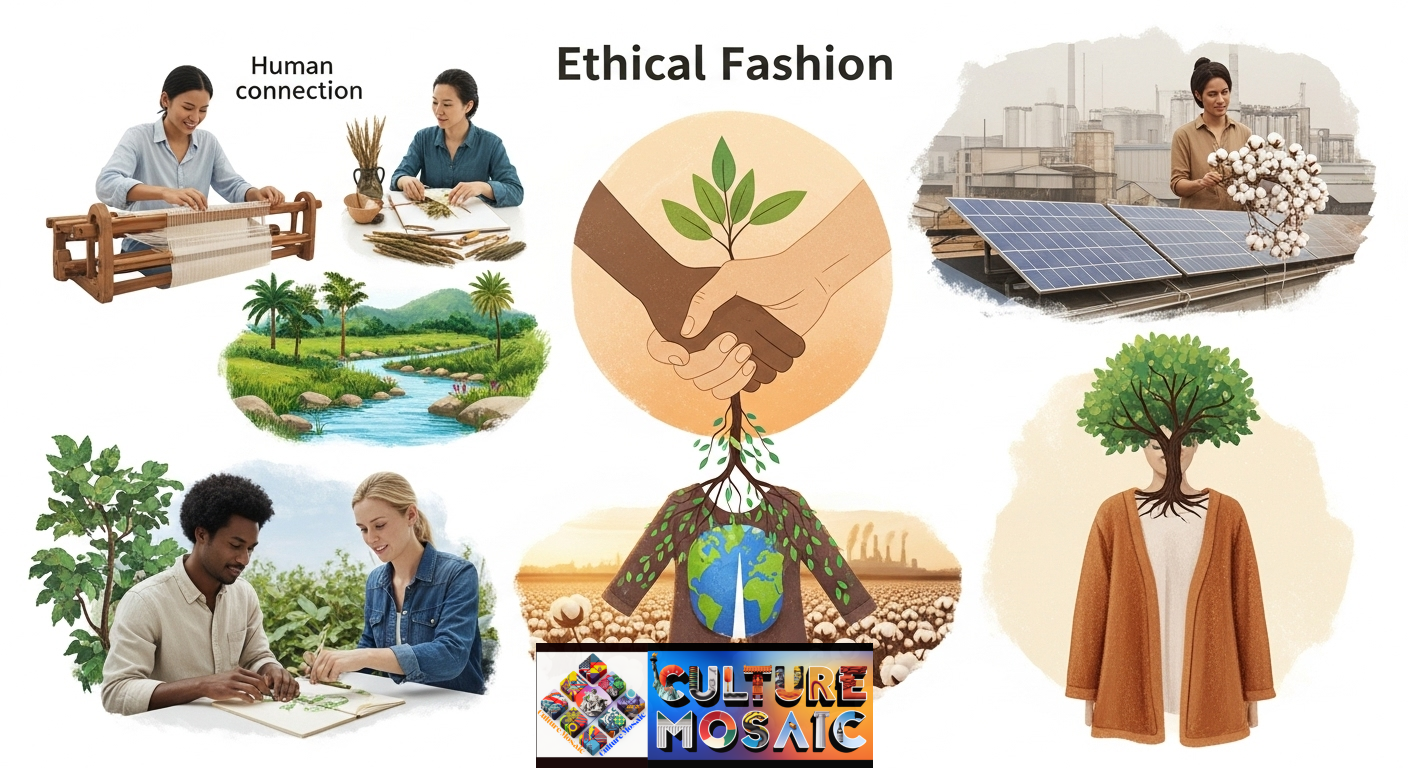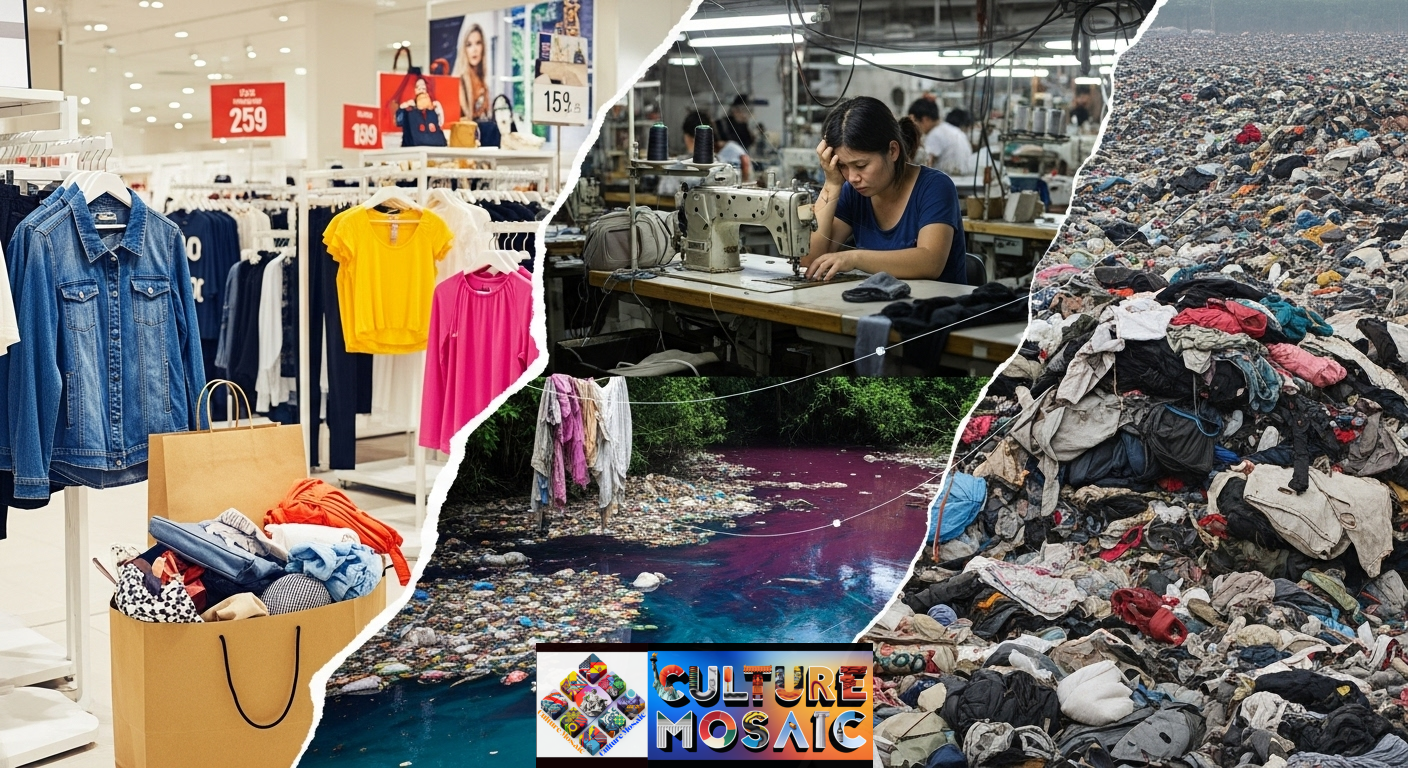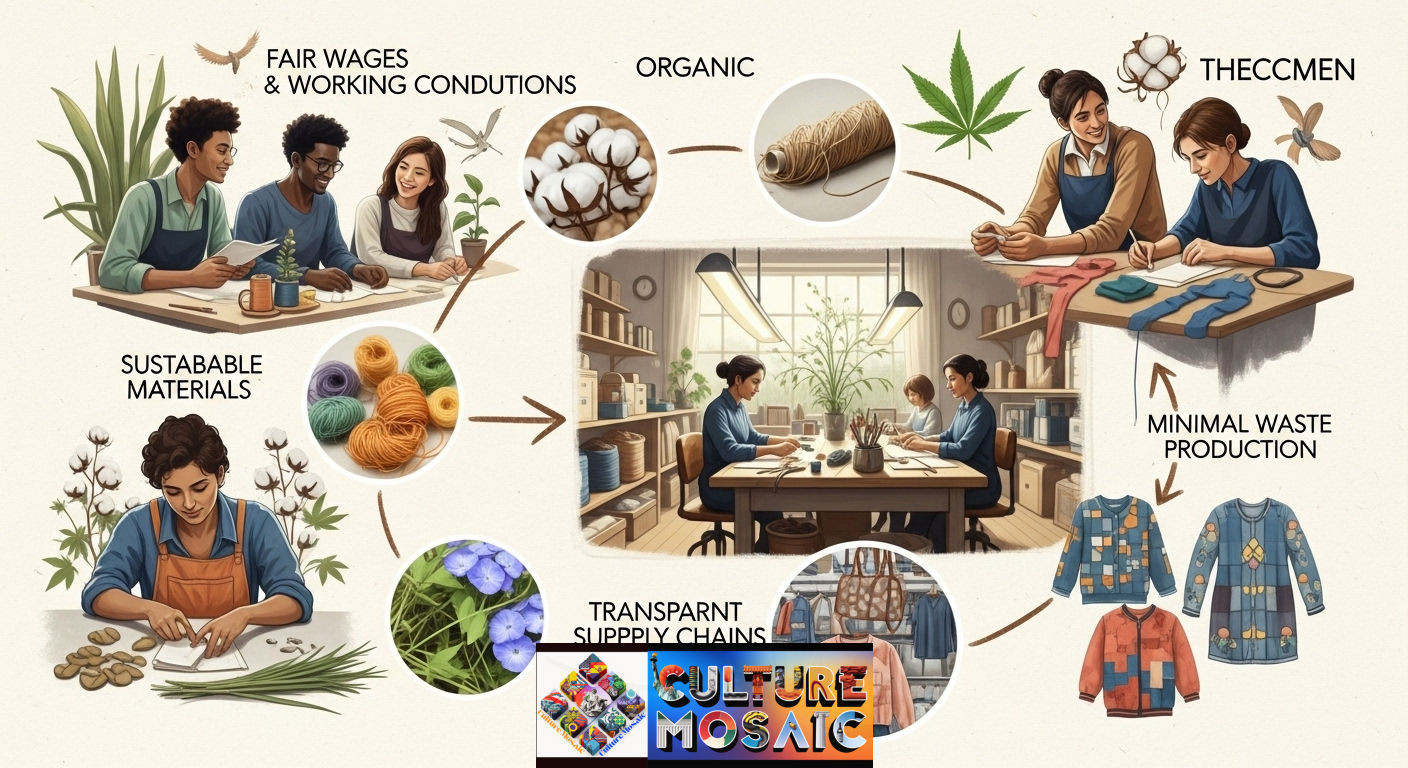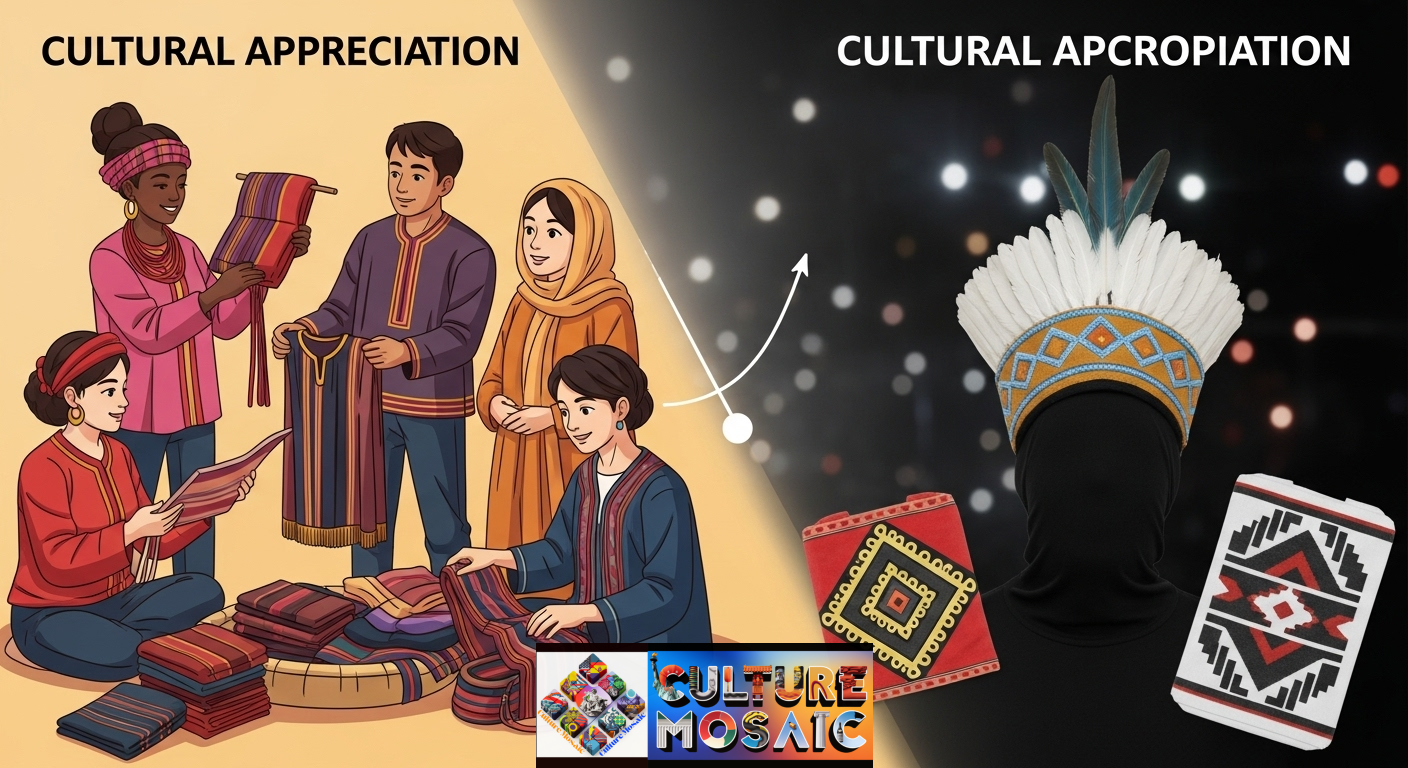The fashion industry stands at a crossroads. Every day, thousands of Americans are waking up to the reality that their clothing choices carry weight far beyond their closets. If you’ve ever wondered where your clothes come from, who made them, or what impact they have on the planet, you’re already part of a growing movement toward ethical fashion.
This shift isn’t just about buying different clothes. It’s about understanding the stories woven into every garment, respecting the cultures that inspire them, and ensuring the hands that craft them are treated fairly. Let’s explore how you can build a wardrobe that looks good, feels good, and does good.
Understanding Ethical Fashion: More Than a Trend

Ethical fashion refers to clothing, shoes, and accessories that are produced with consideration for the people who make them and the environmental impact of their production. It encompasses fair wages, safe working conditions, sustainable materials, and transparent supply chains.
The traditional fashion model has operated on a simple principle: produce as much as possible, as quickly as possible, for as little cost as possible. This approach has devastating consequences. Workers in developing countries often earn poverty wages while working in dangerous conditions. Meanwhile, the environmental toll includes massive water consumption, chemical pollution, and textile waste that fills landfills for decades.
When you choose ethical fashion, you’re voting with your wallet for a different system. You’re supporting brands that pay fair wages to artisans in Guatemala, use organic cotton grown without harmful pesticides in India, or recycle ocean plastics into beautiful fabrics in California.
The True Cost of Fast Fashion

Before we talk about solutions, let’s understand the problem. Fast fashion has trained consumers to expect new styles every week at rock-bottom prices. But these prices don’t reflect the real cost.
A $10 t-shirt didn’t actually cost $10 to make. Someone paid the difference, and it’s usually the garment worker earning $3 per day in unsafe conditions, or the river polluted with textile dyes, or the landfill overflowing with discarded clothing.
The fashion industry produces 100 billion garments annually. Americans alone throw away approximately 81 pounds of clothing per person each year. Most of these clothes are made from synthetic materials that will sit in landfills for 200 years or more.
This isn’t sustainable, and more importantly, it’s not necessary. Alternatives exist, and they’re becoming more accessible every day.
What Makes Fashion Truly Ethical

Ethical fashion isn’t defined by a single certification or label. It’s a holistic approach that considers multiple factors throughout the production process.
Fair wages and working conditions form the foundation. Workers should earn enough to meet their basic needs and work in safe, dignified environments. Brands committed to ethical fashion often partner directly with artisan cooperatives or maintain transparent relationships with their factories.
Sustainable materials matter enormously. Organic cotton uses 91% less water than conventional cotton. Recycled fabrics keep plastics out of oceans. Natural dyes replace toxic chemicals. Hemp, linen, and Tencel offer eco-friendly alternatives to resource-intensive materials.
Transparent supply chains allow you to trace your garment from fiber to finished product. Ethical brands aren’t afraid to show you where and how their clothes are made. They share factory locations, wage information, and environmental impact data.
Minimal waste production reduces environmental harm. This includes using fabric scraps creatively, producing smaller batches to avoid overstock, and designing durable clothes that last for years rather than months.
Navigating Cultural Appreciation vs. Appropriation

Here’s where ethical fashion gets personal and complex. Global style celebrates the beautiful diversity of textile traditions worldwide. But there’s a meaningful difference between appreciation and appropriation, and understanding this distinction is crucial for anyone building an ethical global wardrobe.
Cultural appreciation happens when you engage respectfully with another culture’s traditions. You learn about the significance of a garment or pattern, purchase directly from artisans or ethical sources, and wear items in context-appropriate ways. You acknowledge where the design originates and ensure the culture benefits from your purchase.
Cultural appropriation, on the other hand, occurs when sacred symbols or traditional designs are taken out of context, mass-produced by corporations with no connection to the culture, and sold without credit or compensation to the originating community. It’s buying a cheap imitation of a Native American headdress from a fast fashion retailer, wearing it as a costume, and ignoring its sacred significance.
The line isn’t always obvious, but asking yourself a few questions helps: Does this purchase directly support the culture it comes from? Do I understand the cultural context of this item? Am I wearing something sacred or ceremonial as a fashion statement? Would members of this culture feel respected by how I’m wearing this?
How to Shop for Ethical Global Fashion
Building an ethical wardrobe requires a different approach than scrolling through fast fashion websites. Here’s how to do it thoughtfully.
Research brands before buying. Look for certifications like Fair Trade, GOTS (Global Organic Textile Standard), or B Corporation status. Check if brands publish information about their factories and labor practices. Read their sustainability reports. Ethical brands are proud to share this information.
Buy directly from artisan cooperatives. Organizations like Ten Thousand Villages, Accompany, and Nest connect you with skilled artisans worldwide. When you buy a hand-woven scarf from a women’s cooperative in Peru, you’re ensuring fair payment goes directly to the makers.
Support brands with transparent supply chains. Companies like Patagonia, Everlane, and Reformation show exactly where their clothes are made and what they cost to produce. This transparency is the opposite of the fast fashion model that deliberately obscures its practices.
Choose quality over quantity. One well-made garment that lasts five years has far less impact than five cheap items that fall apart in months. Ethical fashion often costs more upfront, but the cost per wear is actually lower.
Shop secondhand strategically. Thrift stores, consignment shops, and online resale platforms like ThredUp or Poshmark extend the life of existing garments. This reduces demand for new production while giving you access to unique pieces.
Spotting Greenwashing in Fashion
As ethical fashion gains popularity, some brands engage in greenwashing, making misleading claims about their sustainability or ethics. Learning to spot this protects you from supporting companies that talk green while operating conventionally.
Vague language is the first red flag. Terms like “eco-friendly” or “conscious collection” mean nothing without specific information. What materials are eco-friendly? How is this collection different from your regular line?
A single sustainable product line while the rest of the brand operates on fast fashion principles is another warning sign. If 95% of a company’s clothes are made conventionally and 5% use organic cotton, they’re using sustainability as a marketing tool rather than a core value.
Lack of specificity about labor practices should concern you. Ethical brands share factory information, wage data, and third-party audit results. If a brand won’t tell you where or how their clothes are made, assume they have something to hide.
Missing certifications can indicate problems. While not every ethical brand has formal certifications, the absence of any third-party verification combined with big sustainability claims deserves skepticism.
Building Your Ethical Global Wardrobe
Transitioning to ethical fashion doesn’t mean throwing out your entire closet tomorrow. That would be wasteful and counterproductive. Instead, approach it as a gradual shift in how you think about and acquire clothing.
Start by taking inventory of what you already own. You might have more than you think, and some pieces just need minor repairs or alterations to become wearable favorites again. Learning basic sewing skills like hemming, replacing buttons, or fixing seams extends the life of your clothes significantly.
When you do need something new, pause before purchasing. Ask yourself if you truly need this item, if you’ll wear it at least 30 times, and if it fits with your existing wardrobe. This mindful approach reduces impulse buying and ensures each addition serves a real purpose.
Invest in versatile basics from ethical sources first. A well-made pair of jeans, a classic white shirt, a quality jacket—these foundational pieces get the most wear and deserve to be ethically sourced. Then add unique global pieces that reflect your personal style and respect their cultural origins.
Care for your clothes properly. Follow washing instructions, air dry when possible, store items correctly, and repair damage promptly. Proper care can double or triple a garment’s lifespan.
Ethical Brands Leading the Way
Several brands are proving that ethical fashion can be beautiful, profitable, and truly sustainable. These companies offer templates for what the industry could become.
Patagonia sets the gold standard for environmental responsibility and supply chain transparency. They publish the factories they use, fight for environmental causes, and encourage customers to buy less and repair more.
Eileen Fisher pioneered circular fashion with their take-back program, turning old garments into new ones. They focus on timeless designs in sustainable materials that transcend seasonal trends.
Reformation makes trendy clothes with a fraction of the environmental impact of conventional brands. They track the water, carbon, and waste saved by each garment and publish this data on product pages.
Nisolo creates beautiful shoes while ensuring fair wages for workers in Peru, Mexico, and Kenya. They publish a sustainability report card and push the entire industry toward transparency.
People Tree works with Fair Trade producers across the developing world, creating fashion that supports artisan communities while using organic and sustainable materials.
The Role of Traditional Craftsmanship
Some of the most ethical fashion comes from preserving traditional textile crafts. When you buy hand-woven fabric from Oaxacan weavers, hand-embroidered blouses from Hungarian artisans, or hand-dyed indigo textiles from Japanese craftspeople, you’re supporting living traditions that have sustained communities for generations.
These crafts represent deep cultural knowledge about materials, techniques, and design. They’re also inherently sustainable, using natural materials, human-powered techniques, and time-tested methods that create minimal waste.
Supporting traditional craftspeople provides fair income to rural and indigenous communities. It validates their skills and encourages younger generations to learn these crafts rather than abandoning them for factory work.
Organizations like the Ethical Fashion Initiative, the Alliance for Artisan Enterprise, and various Fair Trade cooperatives connect traditional artisans with global markets, ensuring they receive fair compensation for their expertise.
The Economic Impact of Ethical Fashion Choices
Every purchase you make supports a particular economic model. When you buy ethical fashion, you’re funding an alternative to the exploitative practices of fast fashion.
Fair Trade clothing ensures workers receive living wages, safe conditions, and community investment. The premium you pay goes directly to improving lives rather than padding corporate profits.
Supporting small ethical brands and local artisans strengthens community economies. Your money circulates locally or goes directly to makers, creating more economic impact than purchasing from multinational corporations.
Ethical fashion creates better jobs. Instead of poverty wages in unsafe factories, ethical production offers skilled work with fair compensation. This lifts communities and creates stable economic foundations.
The growth of ethical fashion also pressures mainstream brands to improve. As more consumers demand transparency and fair practices, even large corporations must respond or risk losing market share.
Common Myths About Ethical Fashion
Several misconceptions prevent people from embracing ethical fashion. Let’s address the most common ones.
“Ethical fashion is too expensive.” While ethical pieces often cost more upfront, they’re usually better quality and last much longer. The cost per wear is often lower than fast fashion. Plus, you can find ethical options at various price points, especially when shopping secondhand or during sales.
“Ethical fashion isn’t stylish.” This myth is outdated. Ethical brands now cover every style from minimalist basics to bold avant-garde. You don’t have to sacrifice aesthetics for ethics.
“I can’t afford to replace my whole wardrobe.” You don’t need to. Transition gradually, starting with new purchases. Keep wearing what you have until items need replacing, then choose ethical alternatives.
“Ethical fashion is only for wealthy people.” While privilege does make ethical shopping easier, there are accessible options. Shopping secondhand, organizing clothing swaps, learning to repair and alter, and prioritizing quality over quantity are all affordable approaches.
How to Verify Brand Claims
In an age of marketing spin, verifying brand claims requires some detective work. Here’s how to separate genuine ethical fashion from clever marketing.
Look for third-party certifications. Fair Trade Certified, GOTS, OEKO-TEX, and B Corp certification require independent auditing and meeting specific standards. These aren’t perfect, but they’re more reliable than brand self-reporting.
Check the “About Us” and sustainability pages. Genuine ethical brands provide detailed information about their practices, including factory locations, materials sourcing, and environmental initiatives. Vague statements without specifics are red flags.
Research independent reviews. Websites like Good On You rate fashion brands on their environmental impact, labor conditions, and animal welfare. The Ethical Fashion Report and Fashion Revolution’s Transparency Index provide additional insights.
Contact brands directly with questions. Ethical companies usually respond quickly and thoroughly. Evasive or generic responses suggest they’re hiding something.
The Future of Ethical Fashion
The fashion industry is at a turning point. Consumer demand for ethical practices is growing, technology is enabling new sustainable materials and production methods, and regulations are starting to hold brands accountable for their impacts.
Innovative materials are emerging. Lab-grown leather, mushroom-based fabrics, and textiles made from agricultural waste are becoming commercially viable. These materials could eliminate many of fashion’s environmental harms.
Circular fashion models are gaining traction. Instead of the linear “make, use, discard” model, circular fashion designs for longevity, repairability, and eventual recycling. Brands are creating take-back programs and designing clothes to be remade into new garments.
Technology enables transparency. Blockchain and other tools allow consumers to trace garments from fiber to finished product, verifying ethical claims.
Legislation is changing. The EU is implementing regulations requiring supply chain transparency and environmental accountability. These legal frameworks will pressure brands to clean up their practices.
Taking Action Beyond Your Closet
Your ethical fashion journey doesn’t have to stop with your purchasing decisions. You can amplify your impact by engaging with the broader movement.
Share your knowledge. When friends compliment your clothes, tell them about the artisan who made them or the ethical brand you discovered. Personal recommendations are powerful.
Support policy changes. Contact your representatives about supply chain transparency legislation, environmental regulations for the fashion industry, and trade policies that protect workers.
Participate in Fashion Revolution Week. Every April, this global campaign asks “Who made my clothes?” and pushes brands for greater transparency. Join by asking your favorite brands about their labor practices.
Organize clothing swaps. Gather friends to exchange clothes they no longer wear. It’s free, fun, and extends the life of garments.
Practical Steps to Start Today
Ready to begin your ethical fashion journey? Here are concrete actions you can take right now.
Audit your current wardrobe. Identify what you wear regularly and what just takes up space. This helps you understand your actual needs versus impulse purchases.
Research three ethical brands that match your style. Bookmark them for when you need something new. Having go-to sources makes ethical shopping easier.
Learn basic clothing repair. YouTube has thousands of tutorials on sewing buttons, fixing hems, and patching holes. These skills save money and reduce waste.
Follow ethical fashion advocates on social media. Influencers like Venetia La Manna, Aja Barber, and Elizabeth Cline share valuable information, brand recommendations, and inspiration.
Set a personal guideline. Maybe it’s “I’ll only buy from certified ethical brands” or “I’ll wait 30 days before purchasing anything new.” Create a rule that works for your life and stick to it.
The Global Connection
When you choose ethical fashion, you’re participating in a global network of change-makers. You’re connected to the seamstress in Bangladesh earning a fair wage for the first time, the organic cotton farmer in India rebuilding healthy soil, the weaver in Guatemala preserving ancestral techniques, and the designer in California proving that sustainable fashion can succeed.
This network spans cultures, continents, and communities. It includes activists pushing for legal reforms, artisans keeping traditional crafts alive, entrepreneurs building ethical brands, and consumers like you making mindful choices.
Your individual actions matter because they’re part of this collective movement. Every ethical purchase shifts demand away from exploitation and toward fairness. Every conversation about ethical fashion spreads awareness. Every repaired garment reduces waste.
The fashion industry won’t transform overnight, but it is transforming. Your choices accelerate that change.
Frequently Asked Questions
How do ethical and sustainable fashion differ from each other?
Ethical fashion focuses on the human element—fair wages, safe working conditions, and respectful cultural engagement. Sustainable fashion emphasizes environmental impact through eco-friendly materials and low-waste production. The best brands address both aspects, creating fashion that’s good for people and the planet. When shopping, look for companies that transparently discuss both their labor practices and environmental initiatives.
How can I afford ethical fashion on a tight budget?
Ethical fashion is accessible at various price points if you’re strategic. Shop secondhand first, as this is both ethical and affordable. When buying new, invest in versatile basics that you’ll wear frequently rather than trendy pieces. Organize clothing swaps with friends. Learn basic repairs to extend what you own. Buy fewer items overall but choose quality pieces that last years instead of months. Many ethical brands have sales sections, and some offer payment plans.
How do I know if a brand is genuinely ethical or just greenwashing?
Look for specific, verifiable information rather than vague claims. Genuine ethical brands share factory locations, publish sustainability reports with measurable data, hold third-party certifications like Fair Trade or B Corp, and respond thoroughly to questions about their practices. Be skeptical of brands that use buzzwords without backing them up, have small “conscious” collections while most production remains conventional, or refuse to disclose supply chain information.
Is it cultural appropriation to wear clothing inspired by other cultures?
Context matters enormously. Appreciation involves purchasing directly from artisans or ethical sources connected to the culture, understanding the item’s significance, and wearing it respectfully. Appropriation happens when you buy mass-produced imitations that don’t benefit the culture, wear sacred or ceremonial items as costumes, or ignore the cultural context. Ask yourself: Does my purchase support the culture? Do I understand what I’m wearing? Would members of this culture feel respected by how I’m wearing this?
What should I do with my existing fast fashion clothes?
Don’t throw them away—that would waste resources and negate your ethical intentions. Wear what you have until items are worn out. Take good care of them to extend their life. When they’re truly beyond repair, donate them if they’re still wearable or recycle them through textile recycling programs. Moving forward, replace items with ethical alternatives only as needed. The most sustainable garment is the one already in your closet.

